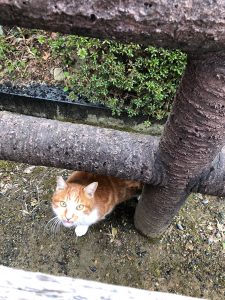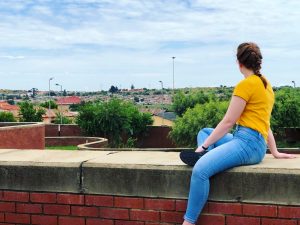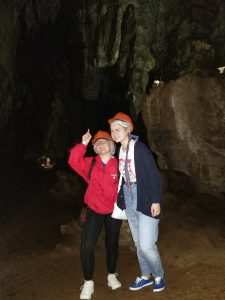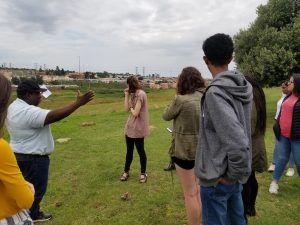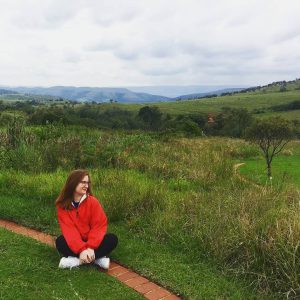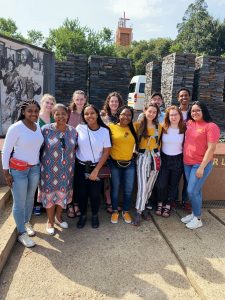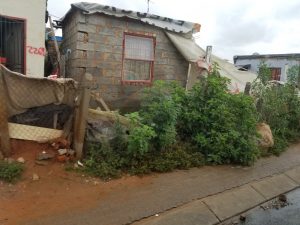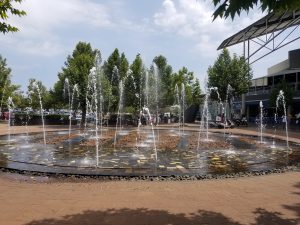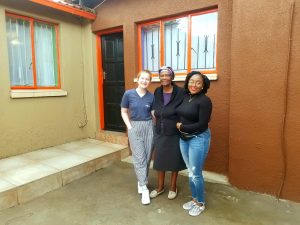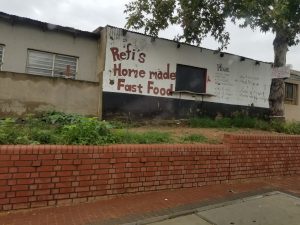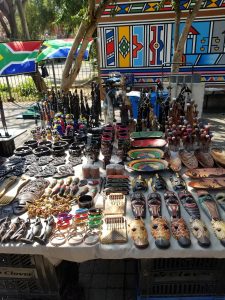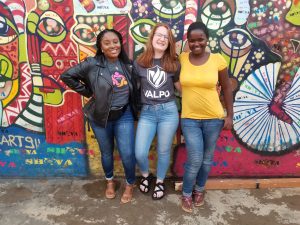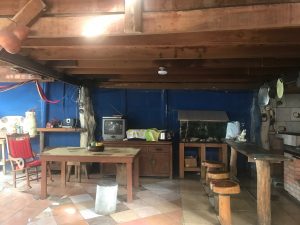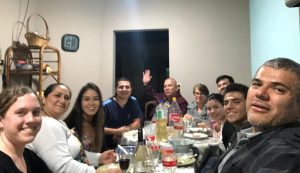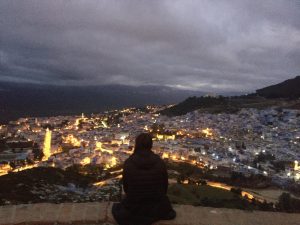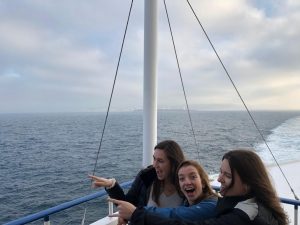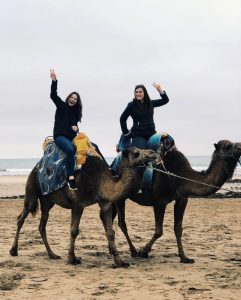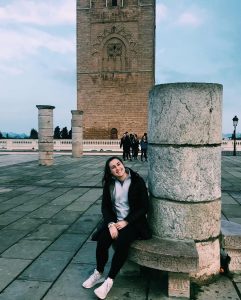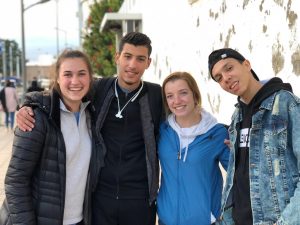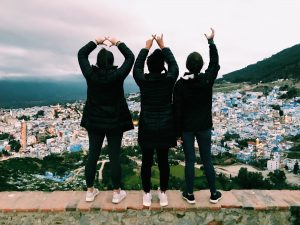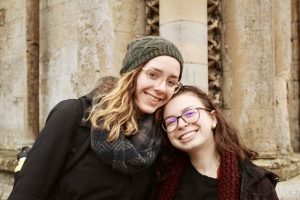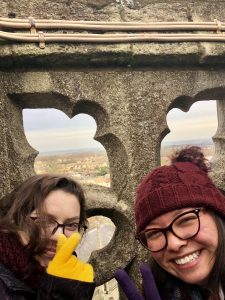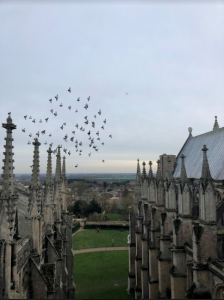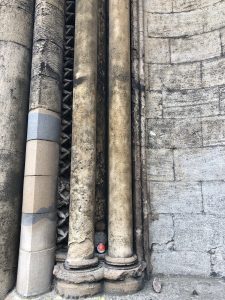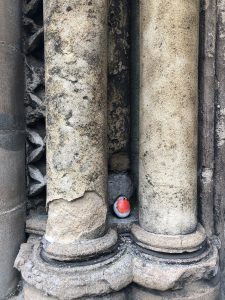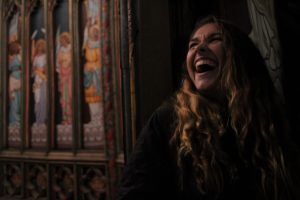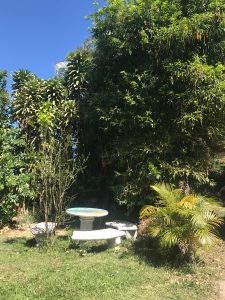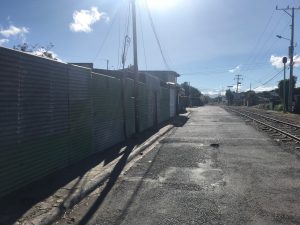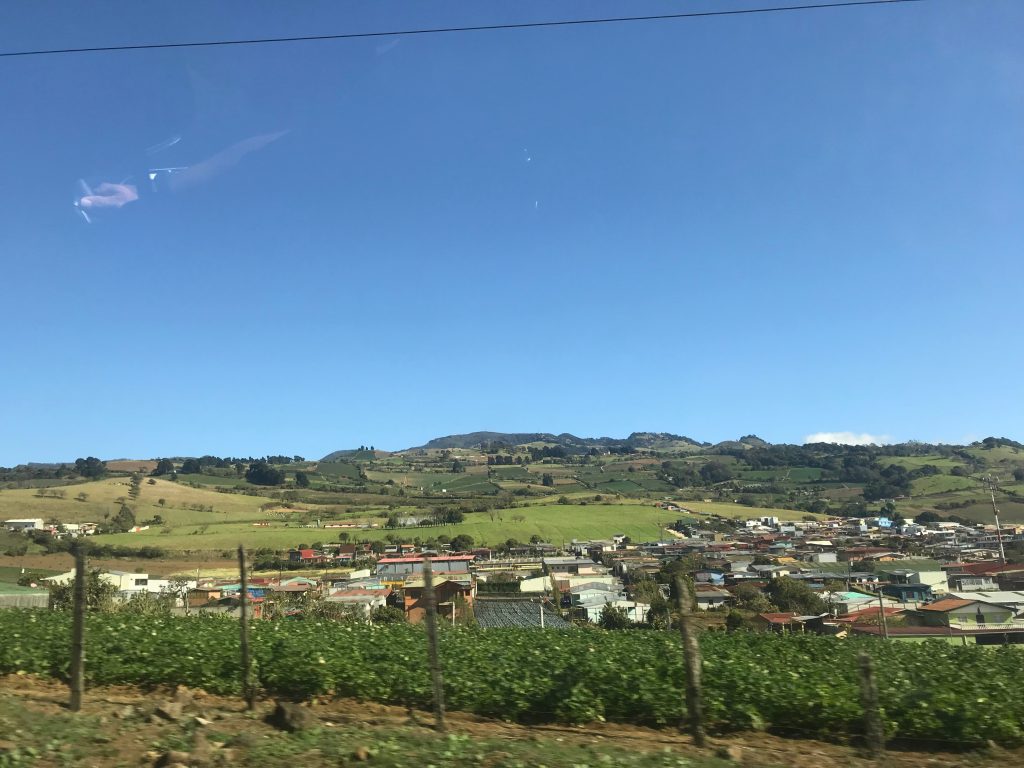Author: Kate Mitchell
Location: Yawata, Kyoto, Japan
Pronouns: She/Her/Hers
On February 3rd, some friends and I traveled to Iwashimizu Hachimangū shrine located in Yawata city in Kyoto prefecture. The shrine is located at the top of a small mountain and to get there, you can either walk up the mountain or take a cable car run by the regional train company. We opted for the cable car and rode into the mountains while listening to the magical music and history of the shrine played during the ride. Once we reached the top of the mountain, we followed a path through a bamboo forest to discover a restaurant and several food trucks waiting for us before the shrine’s entrance. The entire day I had been craving a Japanese crepe and right in front of me was a pink food truck selling exactly that. I decided on a caramel banana crepe which was topped with whipped crème and a small jelly pawprint, the logo of the crepe company. It was a delicious treat to start the day!
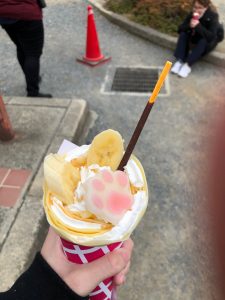
Although the food was a pleasant surprise, we had actually come to Iwashimizu Hachimangū to celebrate Setsubun. I didn’t know anything about this holiday before coming to Japan, so I did some research before going to the shrine to learn all about it. Setsubun is about getting rid of bad luck and gaining good luck. The shrine’s priest pretended to shoot an arrow from a giant bow in this year’s unlucky directions to send out the bad luck. Shrine visitors could buy their own arrows and have them blessed by the local priestess for good luck. Another way to get rid of bad luck is for people to throw roasted soybeans at people dressed as demons to send the demons away. At Iwashimizu Hachimangū, the shrine’s priests and priestesses threw beans at a group of demons, sending them tumbling down the shrine’s steps in a silly fashion. From the side of the shrine, I could see a group of young priestesses watching the ceremony eagerly like schoolgirls. It was super cute! Once the demons were gone, the shrine threw bags of roasted soybeans into the crowd. Those who caught a bag are supposed to eat the beans for good luck. Unfortunately, I wasn’t able to catch a bag, but I still think I have some good luck.
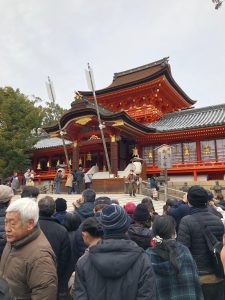
Later after the ceremony, my friends and I were approached by an elderly man and woman who were training to be English tour guides at Iwashimizu Hachimangū. They recognized us as foreigners and offered to give us a free tour of the shrine as training practice. We decided to take a tour with them around the shrine and its surrounding area. The shrine was surrounded by other small shrines all dedicated to different Shintō gods or kami although the main kami of Iwashimizu Hachimangū is Hachiman. The shrine is over a thousand years old and Japan’s three most important historical figures, Oda Nobunaga, Toyotomi Hideyoshi and Tokugawa Ieyasu all contributed to building different parts of the shrine throughout history. We also saw a surprising American face! There was a memorial dedicated to Thomas Edison since he used bamboo filaments taken from the bamboo at Iwashimizu Hachimangū in his light bulb.
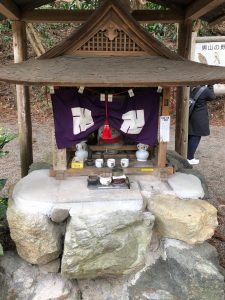
With most of the festivities finished, we decided to take a break and watch my friend, Katie, do one last Setsubun ritual. You’re supposed to eat a long maki roll in the year’s lucky direction all in one bite. While you eat it, everyone around you has to be silent. But the roll was so big Katie couldn’t finish it all in one bite and the rest of us couldn’t stop ourselves from laughing while she ate it. So she fed the rest of her roll to a cat who snuck up behind us. We got to play with the cat for a little bit before it disappeared into the bushes with its food to hide from the coming rain. We decided to do the same and take the train home before we got soaked!
